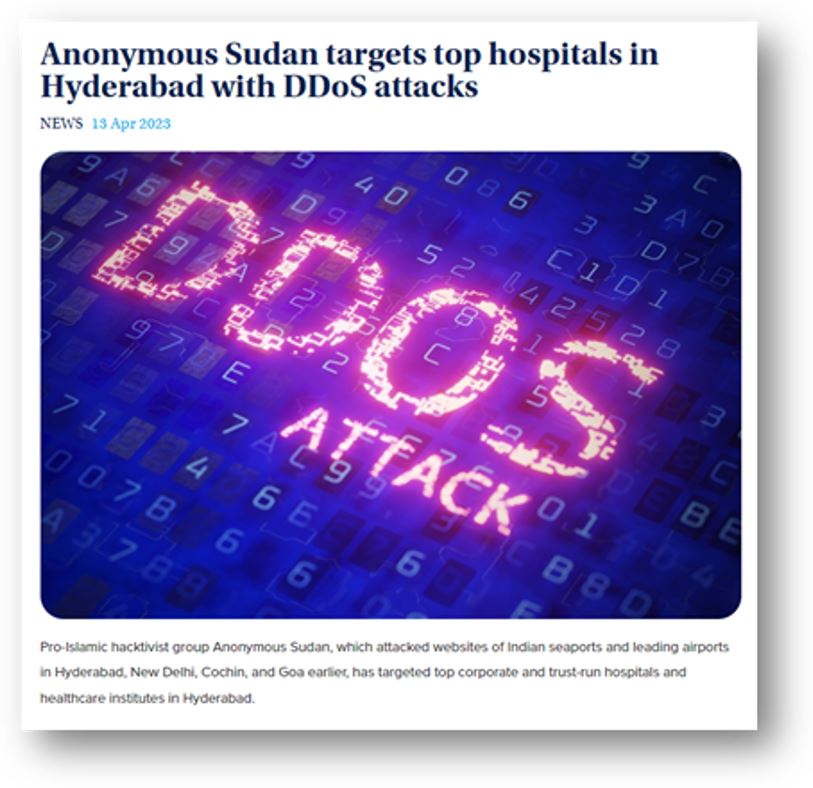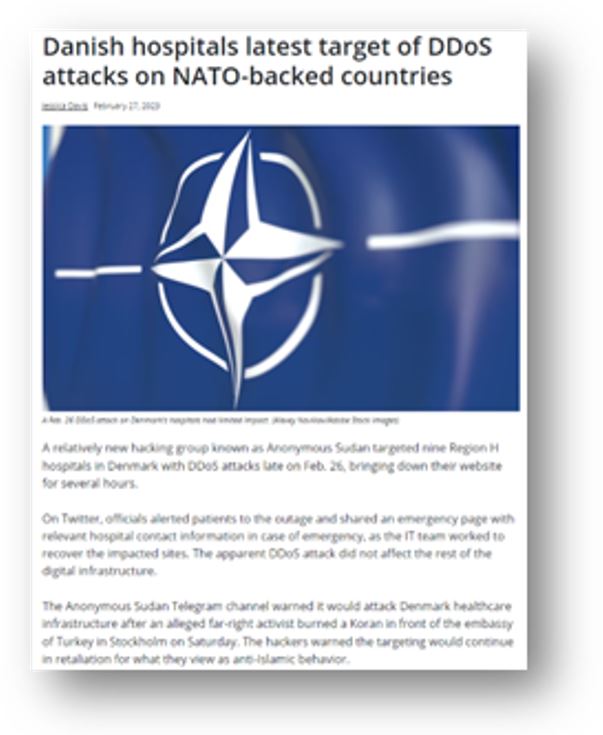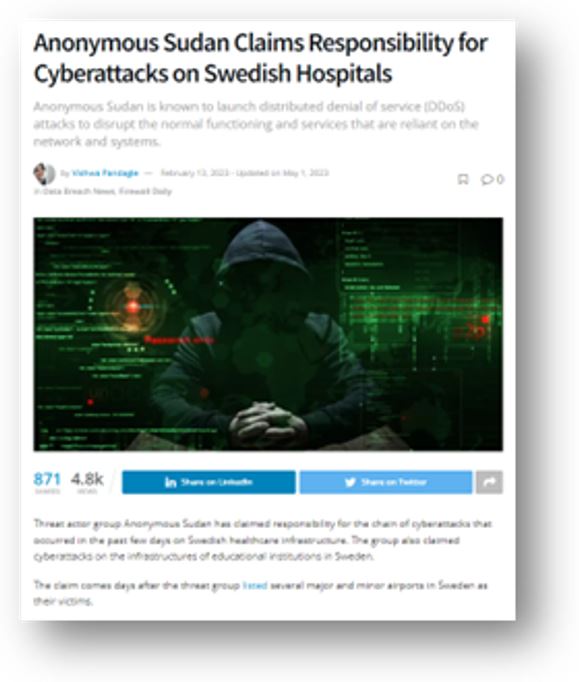5 Ways DDoS Attacks Disrupt Healthcare Services
Healthcare institutions are experiencing a significant digital transformation, with a growing reliance on technology to deliver critical services and patient care. With the increasing adoption of electronic health records, telemedicine, and online patient portals, the availability and seamless operation of healthcare applications and services has become paramount. This is why protecting against DDoS attacks is critical for hospitals, pharmaceutical companies, and other healthcare institutions.
The evolving threat landscape of DDoS attacks in the healthcare sector
Healthcare institutions are required to provide uninterrupted access to medical information and services, ensuring timely and efficient patient care. Any disruption to these essential systems due to DDoS attacks can have severe consequences, jeopardizing patient safety, compromising data integrity, and affecting the reputation of the institution.
Moreover, the evolving threat landscape of DDoS attacks adds to the concerns of healthcare institutions. Cybercriminals are continuously adapting their tactics, leveraging sophisticated attack vectors to exploit vulnerabilities. The convergence of Internet of Things (IoT) devices in healthcare, such as connected medical devices and wearable technology, introduces additional attack surfaces, making the healthcare industry more susceptible to DDoS attacks.
As healthcare institutions strive to deliver high-quality patient care while ensuring data security and compliance, investing in a comprehensive DDoS protection solution becomes imperative. A robust DDoS protection strategy can safeguard critical systems, prevent service disruptions, and maintain the trust of patients and partners. By proactively defending against and mitigating DDoS attacks, healthcare institutions can focus on their primary mission of providing exceptional patient care while preserving the integrity of sensitive medical information.
DDoS Attacks Campaigns Against Healthcare Institutions
One of the biggest shifts in the DDoS threat landscape in recent times is the rise of state-sponsored and ”hacktivist” groups and the emergence of political motivation—rather than financial motivation–as the main driver for DDoS attacks. As a result, the profile of targeted victims has expanded to include governmental institutions, civilian infrastructure, and non-profit organizations. Sadly, this has also led to an increase in DDoS attacks against hospitals and healthcare institutions.
One such high-profile attack was the campaign in late 2022 by the pro-Russian hacktivist group, Killnet. The attack targeted hospitals and medical centers inside the U.S. and other pro-Ukraine nations. Websites of more than 14 medical centers across the U.S. were hit by DDoS attacks, including high-profile institutions such as Stanford Healthcare, Duke University Hospital and Cedars-Sinai. Another example was the campaign by Anonymous Sudan against hospitals and healthcare institutions in Denmark and Sweden in February 2023. These attacks were motivated by the actions of local politicians that the group found objectionable.
News articles attacks against hospitals in Sweden and Denmark
Yet another example targeted hospitals and government institutions in India in March and April 2023. Launched by pro-Russian groups and Islamist hacktivist groups such as Anonymous Sudan, the attacks brought down the websites of several hospitals in the Hyderabad area, as well as the Indian Ministry of Health. These attacks appeared to be motivated by both politics and religion.

As these examples show, hospitals and healthcare organizations are increasingly targeted by state-sponsored and hacktivist groups for reasons completely unrelated to the actions of the organizations themselves, but rather because of geo-political events, local disputes, and religious tensions. Nonetheless, they demonstrate that healthcare organizations are at the forefront of DDoS attack activity and must act to protect themselves accordingly.
How DDoS Attacks Harm Healthcare Institutions
In the ever-evolving healthcare landscape, institutions face many challenges and concerns, particularly when protecting their critical digital infrastructure from the perils of DDoS attacks. The seamless operation of healthcare applications and services has become mission-critical, as patient care increasingly relies on technology and data accessibility. However, the rise of DDoS attacks poses a grave threat to healthcare institutions, causing disruptions, compromising patient safety, breaching data security, inflicting financial losses, damaging reputations, and leading to compliance violations. In this context, a robust DDoS protection strategy becomes essential for healthcare institutions to ensure uninterrupted patient care, safeguard sensitive information, and uphold their reputation and trust within the industry.
DDoS attacks can cause significant harm to healthcare institutions in various ways:
Financial Losses: DDoS attacks can result in significant financial losses for healthcare institutions. The costs associated with mitigating the attack, restoring services, and implementing additional security measures can be substantial. Moreover, the loss of revenue due to service disruptions and potential patient churn can further impact the institution’s bottom line.
Disruption of Critical Patient Services: DDoS attacks can overwhelm the network infrastructure and targeted servers, leading to service disruptions. Healthcare institutions heavily rely on electronic health record systems, patient portals, and communication platforms for critical functions like patient care, appointment scheduling, and medical record access. Any disruption to these services can hinder healthcare professionals’ ability to provide timely and effective care to patients.
Risk to Patient Safety: In healthcare, timely access to medical information and services is crucial for patient safety. DDoS attacks that disrupt access to patient records or medical devices can delay vital treatments and procedures, potentially endangering patients’ lives.
Cover Up of Data Breach Attempts: Some DDoS attacks serve as a smokescreen to divert attention while hackers attempt to breach the institution’s security and access sensitive patient data. Such attacks can lead to data breaches and expose private patient information, resulting in legal and regulatory consequences, financial penalties, and damage to the institution’s reputation.
Brand Reputation Damage: A successful DDoS attack on a healthcare institution can erode the trust and confidence of patients and partners. The negative publicity and perception of compromised data security may lead to patients seeking care from competitors, impacting the institution’s reputation and market standing.
Overall, DDoS attacks pose a severe threat to healthcare institutions, not only in terms of immediate service disruptions but also in long-term consequences related to patient safety, data security, financial stability, and reputation.

Summary
In an era of transformative technological integration within healthcare, the vulnerability of healthcare institutions to DDoS attacks cannot be underestimated. As digitalization accelerates, reliance on technology for patient care and critical services grows, demanding uninterrupted access to healthcare applications. This vulnerability has been further compounded by the evolving landscape of DDoS attacks, which now encompass politically motivated and state-sponsored campaigns. This shift has targeted hospitals and medical centers, causing disruptions that compromise patient safety, data integrity, financial stability, and institutional reputation.
To safeguard patient care, sensitive information, and industry trust, healthcare institutions must adopt robust DDoS protection strategies that shield against these multifaceted threats.





